5GHz vs 2.4GHz Wi-Fi on PS5: The PlayStation 5 (PS5) is the latest gaming console from Sony, which comes with advanced features such as a solid-state drive (SSD) and support for ray tracing. However, one of the most important features that determine the online gaming experience is the Wi-Fi connectivity. The PS5 supports both 5GHz and 2.4GHz Wi-Fi bands, and choosing the right one can make a significant difference in the overall gaming experience.
The 5GHz Wi-Fi band is the newer of the two and offers faster speeds, lower latency, and higher bandwidth, making it the preferred choice for online gaming. On the other hand, the 2.4GHz band has a longer range and better wall penetration, making it a better option for larger homes and apartments. However, it is important to note that the 2.4GHz band is more susceptible to interference from other devices and can result in slower speeds and higher latency.
Understanding Wi-Fi Bands
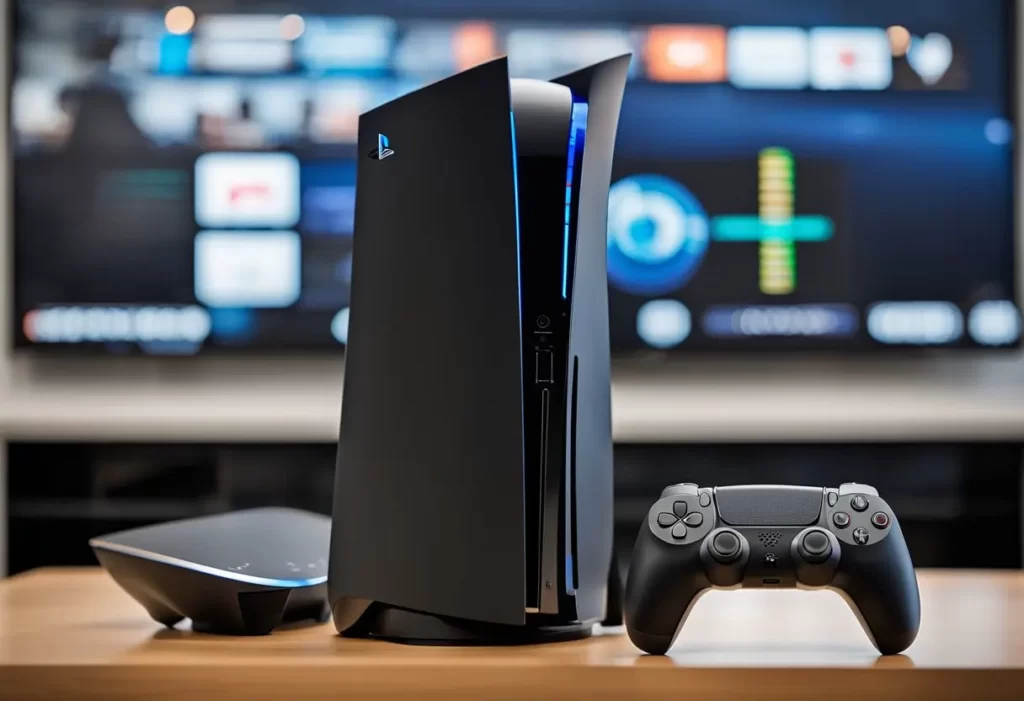
Wi-Fi bands refer to the frequencies at which Wi-Fi routers can transmit signals to devices. The two most common Wi-Fi bands are 2.4GHz and 5GHz. The difference between these two bands lies in their speed, range, and ability to penetrate through walls and other obstacles.
2.4GHz Wi-Fi Band
The 2.4GHz Wi-Fi band is the most widely used Wi-Fi band. It has a longer range and can penetrate through walls better than the 5GHz band. However, the downside to using this band is that it is prone to interference from other devices such as microwaves and cordless phones. This interference can cause slower speeds and a less stable connection.
5GHz Wi-Fi Band
The 5GHz Wi-Fi band is less prone to interference and offers faster speeds than the 2.4GHz band. It is ideal for activities that require a lot of bandwidth such as streaming HD videos and online gaming. However, the downside to using this band is that it has a shorter range and is not as effective at penetrating through walls.
When it comes to PS5 Wi-Fi connectivity, it is recommended to use the 5GHz band for the best performance. This is especially true if you plan on playing games online or streaming content in high definition. However, if your PS5 is located far away from your Wi-Fi router or if you experience interference from other devices, you may need to switch to the 2.4GHz band to achieve a stable connection.
Comparing 5GHz and 2.4GHz Frequencies
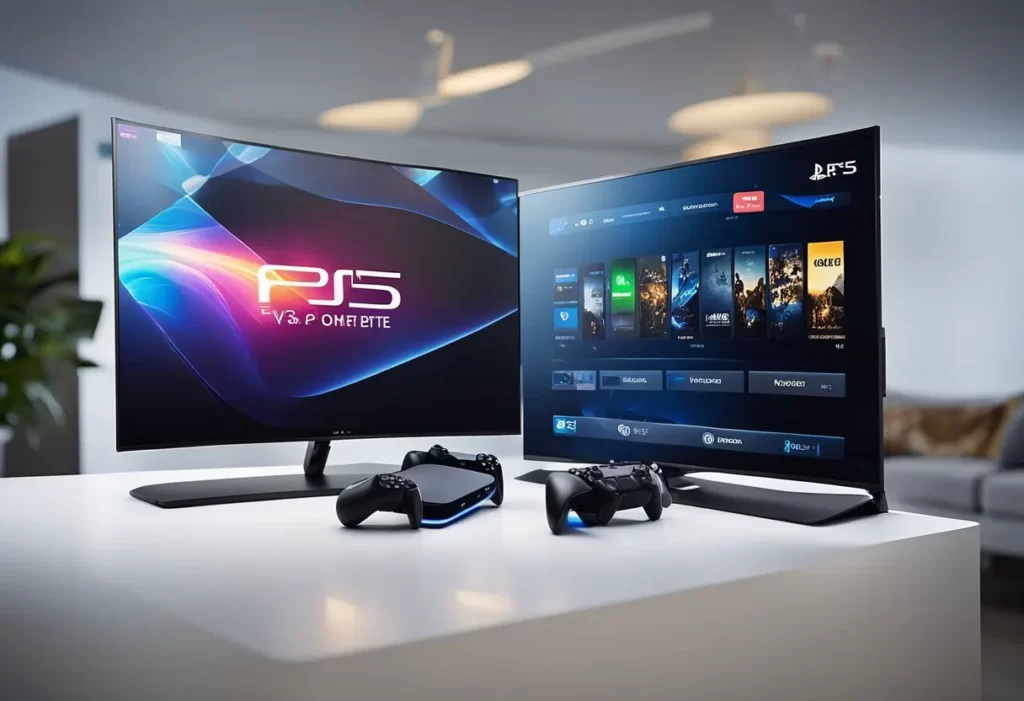
When it comes to Wi-Fi frequencies, the two most commonly used are 5GHz and 2.4GHz. Both frequencies have their advantages and disadvantages, and understanding the differences between them can help you determine which one is better for your PS5.
5GHz Frequency
The 5GHz frequency is a newer and faster Wi-Fi standard that offers a more reliable and stable connection. It uses a wider channel bandwidth, which means it can transmit more data at a faster rate. This makes it ideal for online gaming and streaming high-definition content on your PS5.
However, the 5GHz frequency has a shorter range compared to the 2.4GHz frequency. It has more difficulty penetrating walls and other obstacles, which can lead to weaker signals in certain areas of your home.
2.4GHz Frequency
The 2.4GHz frequency is an older Wi-Fi standard that has been around for a long time. It has a longer range compared to the 5GHz frequency, which makes it ideal for larger homes or apartments with multiple rooms.
However, the 2.4GHz frequency is more susceptible to interference from other devices that operate on the same frequency, such as microwaves, cordless phones, and Bluetooth devices. This can lead to slower speeds and less stable connections, especially when multiple devices are connected to the same network.
Overall, both frequencies have their pros and cons, and the best option for your PS5 depends on your specific needs and preferences. If you prioritize speed and reliability, then the 5GHz frequency is the way to go. If you prioritize range and compatibility with older devices, then the 2.4GHz frequency may be a better choice.
PS5 Wi-Fi Capabilities
The PS5 comes with built-in Wi-Fi capabilities that allow players to connect to the internet wirelessly. It supports both 2.4GHz and 5GHz Wi-Fi bands. However, it is important to note that not all Wi-Fi routers are the same, and some may not support the 5GHz band.
The PS5’s Wi-Fi capabilities are powered by a Sony J20H100 Wi-Fi 6 network card with support for 2×2 MU-MIMO wireless transfers and Bluetooth 5.1. This card offers faster and more reliable connections than previous Wi-Fi standards, making it ideal for online gaming and streaming.
Players who want to get the best network performance on their PS5 should consider using the 5GHz band. This band offers faster speeds and lower latency than the 2.4GHz band. However, the 2.4GHz band has a better range and can penetrate walls and other obstacles better than the 5GHz band.
It is worth noting that the choice of Wi-Fi band may also depend on the player’s internet speed and the number of devices connected to the same network. If the player has a fast internet connection and few devices connected, then the 5GHz band may be the better option. However, if the player has a slower internet connection or many devices connected, then the 2.4GHz band may be the better option.
Overall, the PS5’s Wi-Fi capabilities are impressive and offer players a reliable and fast way to connect to the internet wirelessly. By choosing the right Wi-Fi band and ensuring their router is compatible, players can enjoy a seamless online gaming and streaming experience on their PS5.
Benefits of 5GHz Wi-Fi for PS5 Gaming
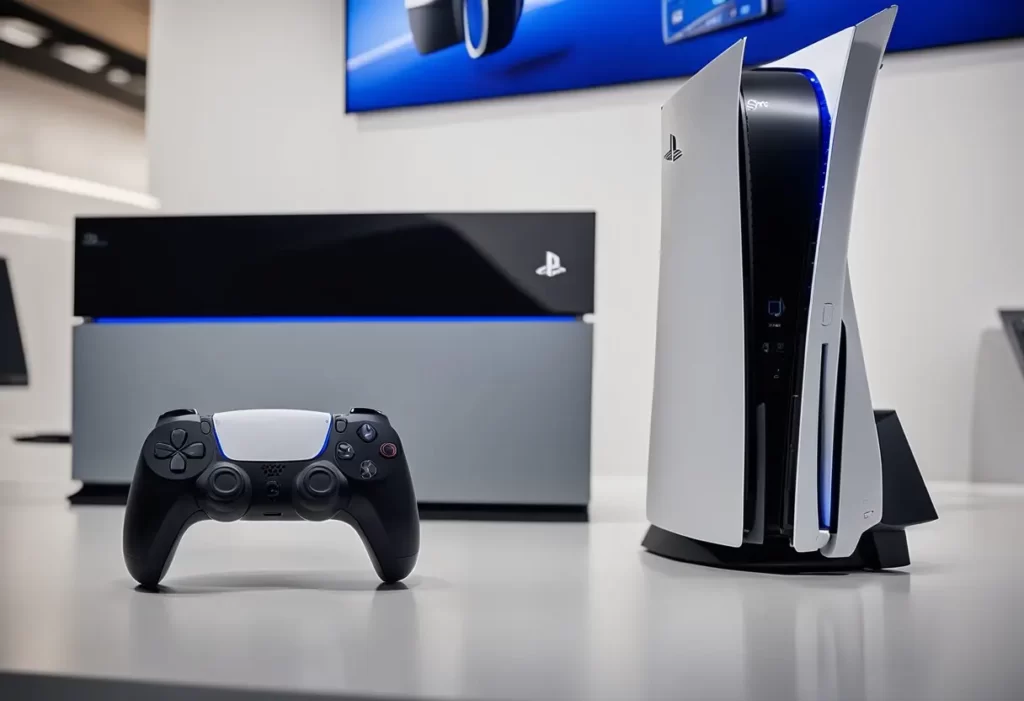
The PS5 console supports both 2.4GHz and 5GHz Wi-Fi bands, but the 5GHz band is generally considered better for gaming. Here are some of the benefits of using 5GHz Wi-Fi for PS5 gaming:
1. Faster Connection Speeds
The 5GHz band offers faster connection speeds compared to the 2.4GHz band. Routers that support the 5GHz band can reach up to 1300 Mbps, which is great for online gaming and streaming activities. This speed, coupled with the lower traffic, can solve some lag issues on PS5 multiplayer games.
2. Reduced Interference
The 5GHz band offers reduced interference from other devices. Since many devices, such as microwaves, cordless phones, and Bluetooth devices, use the 2.4GHz band, it can get crowded and cause interference. This can lead to slower connection speeds and increased latency, which can negatively affect the gaming experience. By connecting to a 5GHz network, players can avoid these issues and enjoy a smoother gaming experience.
3. Improved Performance in Crowded Areas
In crowded areas, such as apartment buildings or college dorms, the 5GHz band can offer improved performance. This is because the 2.4GHz band can get crowded with many devices using the same frequency, leading to slower speeds and increased latency. The 5GHz band, on the other hand, is less crowded and can offer faster speeds and lower latency, resulting in a better gaming experience.
In summary, the 5GHz Wi-Fi band offers faster connection speeds, reduced interference, and improved performance in crowded areas, making it the better choice for PS5 gaming.
Challenges of 5GHz Wi-Fi Connectivity
While 5GHz Wi-Fi offers faster speeds and less interference, it also has some challenges that users of PS5 may face. Here are some of the challenges of 5GHz Wi-Fi connectivity:
Limited Range
One of the biggest challenges of 5GHz Wi-Fi is its limited range. 5GHz signals have a shorter range than 2.4GHz signals, which means that they are not able to penetrate walls and other obstacles as easily. This can result in weaker signals and slower speeds, especially if the PS5 is located far from the Wi-Fi router. In such cases, it is recommended to use a Wi-Fi extender to boost the signal strength.
Interference from Other Devices
Another challenge of 5GHz Wi-Fi is that it is more susceptible to interference from other devices. Many household appliances, such as microwaves, cordless phones, and Bluetooth devices, operate on the 2.4GHz frequency band. This can cause interference with the 5GHz Wi-Fi signal, resulting in slower speeds and weaker connections. To avoid this, it is recommended to keep the PS5 away from these devices or switch to the 2.4GHz frequency band.
Compatibility Issues
Not all devices are compatible with 5GHz Wi-Fi, including some older devices and gaming consoles. While the PS5 supports 5GHz Wi-Fi, some older routers may not. Additionally, some gaming accessories, such as headsets and controllers, may not support 5GHz Wi-Fi. In such cases, it is recommended to switch to the 2.4GHz frequency band or upgrade to a newer router that supports 5GHz Wi-Fi.
In conclusion, while 5GHz Wi-Fi offers faster speeds and less interference, it also has some challenges that users of PS5 may face. By understanding these challenges and taking appropriate measures, users can ensure a stable and reliable Wi-Fi connection for their PS5 gaming experience.
Optimizing PS5 Performance on 2.4GHz
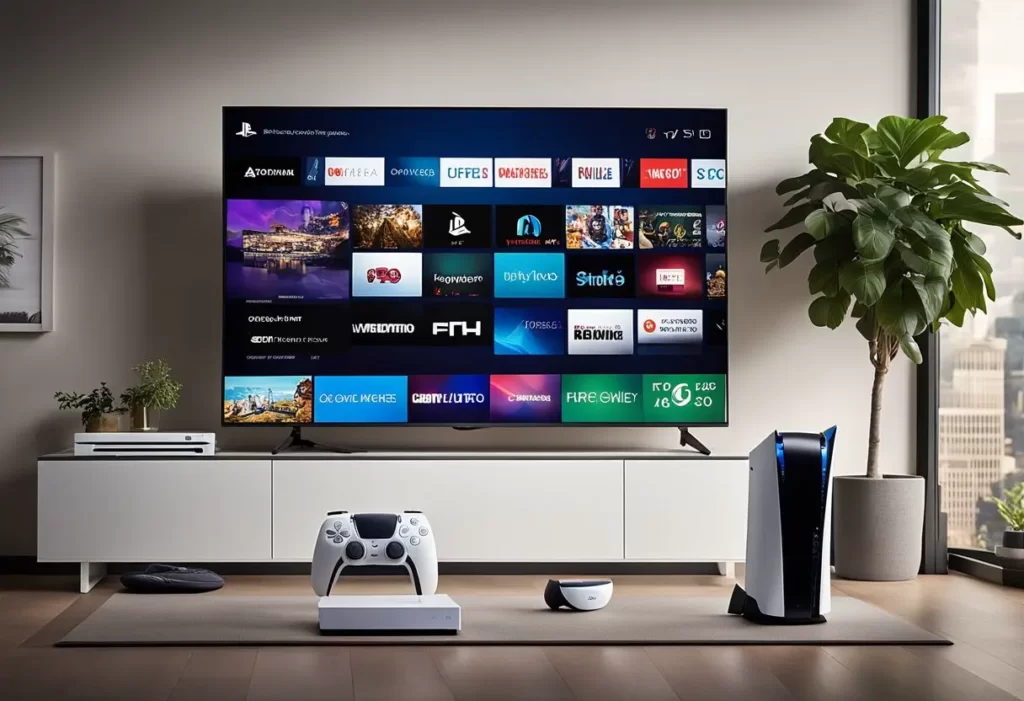
When connecting to Wi-Fi on the PS5, users have the option to connect to either the 2.4GHz or 5GHz frequency band. While the 5GHz frequency band provides faster download and upload speeds, the 2.4GHz frequency band has a wider coverage range and is less likely to experience interference.
If a user is experiencing slow internet speeds or connection issues on the 2.4GHz frequency band, there are a few steps they can take to optimize their PS5 performance:
1. Check for Interference
The 2.4GHz frequency band is more susceptible to interference from other electronic devices such as microwaves, cordless phones, and Bluetooth devices. If a user is experiencing slow internet speeds or connection issues on the 2.4GHz frequency band, they should check for interference from other devices and move their PS5 away from them.
2. Check for Network Congestion
The 2.4GHz frequency band is also more likely to experience network congestion due to the number of devices that use this frequency band. If a user is experiencing slow internet speeds or connection issues on the 2.4GHz frequency band, they should check if there are other devices connected to the same network and disconnect any unnecessary devices.
3. Use Ethernet LAN
If possible, it is recommended to use Ethernet LAN to connect the PS5 to the internet. This provides a more stable and reliable connection compared to Wi-Fi, regardless of the frequency band used.
Overall, while the 2.4GHz frequency band may not provide the fastest internet speeds, it can still provide a stable and reliable connection if optimized properly.
Factors Influencing Wi-Fi Band Selection
When it comes to choosing between 5GHz and 2.4GHz Wi-Fi bands on a PS5, there are several factors that can influence the decision. Some of the most important factors are:
1. Distance from the Router
One of the key factors that can influence the choice of Wi-Fi band is the distance from the router. Generally, the 2.4GHz band has a longer range than the 5GHz band. This is because the lower frequency used by the 2.4GHz band can penetrate through walls and other obstacles more easily than the higher frequency used by the 5GHz band. Therefore, if the PS5 is located far away from the router, the 2.4GHz band may be a better choice.
2. Speed Requirements
Another factor that can influence the choice of Wi-Fi band is the speed requirements of the user. The 5GHz band is generally faster than the 2.4GHz band, as it can support higher data transfer rates. This makes it a better choice for activities that require high bandwidth, such as online gaming or streaming high-definition video. On the other hand, if the user only needs to browse the web or check email, the 2.4GHz band may be sufficient.
3. Interference
Interference is another important factor that can affect the performance of Wi-Fi networks. The 2.4GHz band is more susceptible to interference from other devices, such as cordless phones, microwaves, and Bluetooth devices. This can cause the Wi-Fi signal to drop or become unstable. The 5GHz band, on the other hand, is less prone to interference, as it operates on a less crowded frequency band. Therefore, if the user has other devices that may interfere with the Wi-Fi signal, the 5GHz band may be a better choice.
In summary, the choice of Wi-Fi band on a PS5 depends on several factors, including distance from the router, speed requirements, and potential interference. By considering these factors, users can select the Wi-Fi band that best meets their needs.
How to Switch Between Wi-Fi Bands on PS5
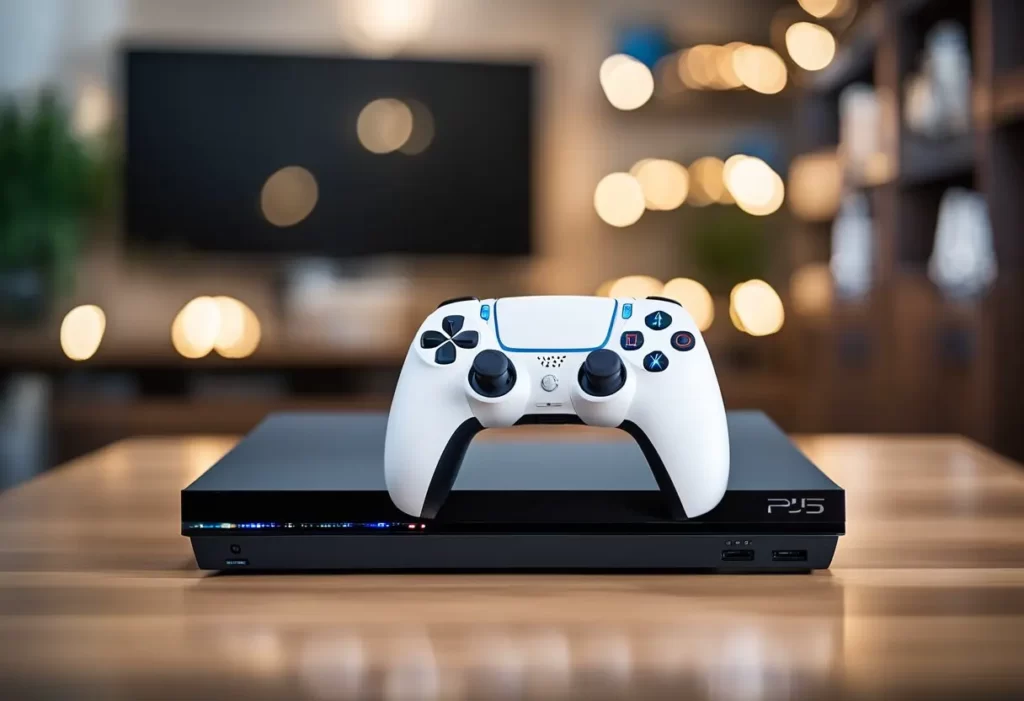
Switching between Wi-Fi bands on PS5 is a straightforward process that can be done in a few steps. The PS5 console supports both 2.4GHz and 5GHz Wi-Fi bands, and you can switch between them based on your network requirements.
To switch between Wi-Fi bands on PS5, follow these steps:
- From the home screen of the system where you select games to play, go to “Settings” on the upper right corner.
- From the “Settings” menu, go to “Network.”
- From the “Network” menu, select “Connection Status” from the left tab and then the “View Connection Status” on the right side of the same screen.
- Check the “Wi-Fi Frequency Bands” section to see if your PS5 is connected to the 2.4GHz or 5GHz band.
If your PS5 is connected to the 2.4GHz band, you can switch to the 5GHz band for faster and more reliable network performance. To do this, follow these additional steps:
- On your PS5, head to the “Settings” menu.
- Select “Network.”
- Select “Settings.”
- Select “Set Up Internet Connection.”
- Wait for the initial scan to end.
- Press the “Options” button on your controller to access the advanced menu.
- Select “5GHz” under “Wi-Fi Frequency Bands.”
- The PlayStation will then re-scan for Wi-Fi networks on the 5GHz band – wait a few seconds.
It’s important to note that not all Wi-Fi networks support both 2.4GHz and 5GHz bands. If your network only supports one of these bands, then you won’t be able to switch to the other band on your PS5. Additionally, the distance between your PS5 and Wi-Fi router can affect the network performance, so make sure to place your PS5 near your router for optimal performance.
Best Practices for PS5 Wi-Fi Setup
When setting up Wi-Fi on PS5, it is important to follow some best practices to ensure a smooth and fast connection. Here are some tips to optimize your PS5 Wi-Fi setup:
Use 5GHz Wi-Fi Band
PS5 supports both 2.4GHz and 5GHz Wi-Fi bands. However, the 5GHz band offers faster speeds and lower latency, making it ideal for online gaming and streaming. According to Sorta Techy, the 5GHz Wi-Fi standard can reach up to 1300 Mbps, which is great for online gaming and streaming activities. In contrast, the 2.4 GHz WiFi band has a maximum theoretical speed of 600 Mbps. Thus, it is recommended to use the 5GHz band for PS5 Wi-Fi setup.
Position Your Router Appropriately
The placement of your router can also affect the Wi-Fi signal strength and speed. It is recommended to place your router in a central location and away from obstructions such as walls, furniture, and appliances. According to Tech Advisor, the further away you are from the router, the weaker the Wi-Fi signal will be. Thus, it is recommended to place the router in a central location to improve the signal strength and speed.
Reduce Wi-Fi Interference
Wi-Fi interference can also affect the signal strength and speed. Interference can come from other Wi-Fi networks, Bluetooth devices, microwaves, and other electronics. To reduce interference, you can change the Wi-Fi channel on your router or move your router away from other electronics. According to Pocket-lint, you can also use a Wi-Fi analyzer app to check for interference and find the best Wi-Fi channel for your network.
By following these best practices, you can optimize your PS5 Wi-Fi setup and enjoy a smooth and fast online gaming and streaming experience.
FAQs About 5GHz vs 2.4GHz Wi-Fi on PS5
What are the advantages of connecting a PS5 to a 5GHz Wi-Fi network over 2.4GHz for gaming?
Connecting a PS5 to a 5GHz Wi-Fi network has several advantages over a 2.4GHz network. The 5GHz band offers faster data transfer rates, lower latency, and less interference from other devices. This means that gamers can experience smoother gameplay, faster download and upload speeds, and reduced lag when playing online games.
How does the PS5’s support for Wi-Fi 6 enhance gaming performance over wireless connections?
The PS5 is the first console to support Wi-Fi 6, which is the latest wireless standard. Wi-Fi 6 offers faster speeds, lower latency, and improved stability over previous Wi-Fi standards. This means that gamers can experience faster and more reliable wireless connections, resulting in smoother gameplay and reduced lag.
What steps can be taken to resolve connectivity issues when using 5GHz Wi-Fi with a PS5?
If you are experiencing connectivity issues when using a 5GHz Wi-Fi network with your PS5, there are several steps you can take to resolve the issue. These include resetting your router, updating your router firmware, changing the Wi-Fi channel, and ensuring that your PS5 is within range of your router.
How does the speed and stability of 2.4GHz and 5GHz Wi-Fi bands compare for PS5 online gaming?
The speed and stability of 2.4GHz and 5GHz Wi-Fi bands can vary depending on a variety of factors, including the distance between your PS5 and your router, the number of devices connected to your network, and the interference from other wireless devices. In general, the 5GHz band offers faster speeds and lower latency, while the 2.4GHz band offers greater range and better penetration through walls and other obstacles.
What are the optimal Wi-Fi settings to maximize the PS5’s internet speed and performance?
To maximize the PS5’s internet speed and performance, it is recommended to use a 5GHz Wi-Fi network, ensure that your PS5 is within range of your router, and minimize interference from other wireless devices. Additionally, you can adjust your router settings to prioritize gaming traffic and ensure that your PS5 is using the latest wireless standard.
Related Posts: